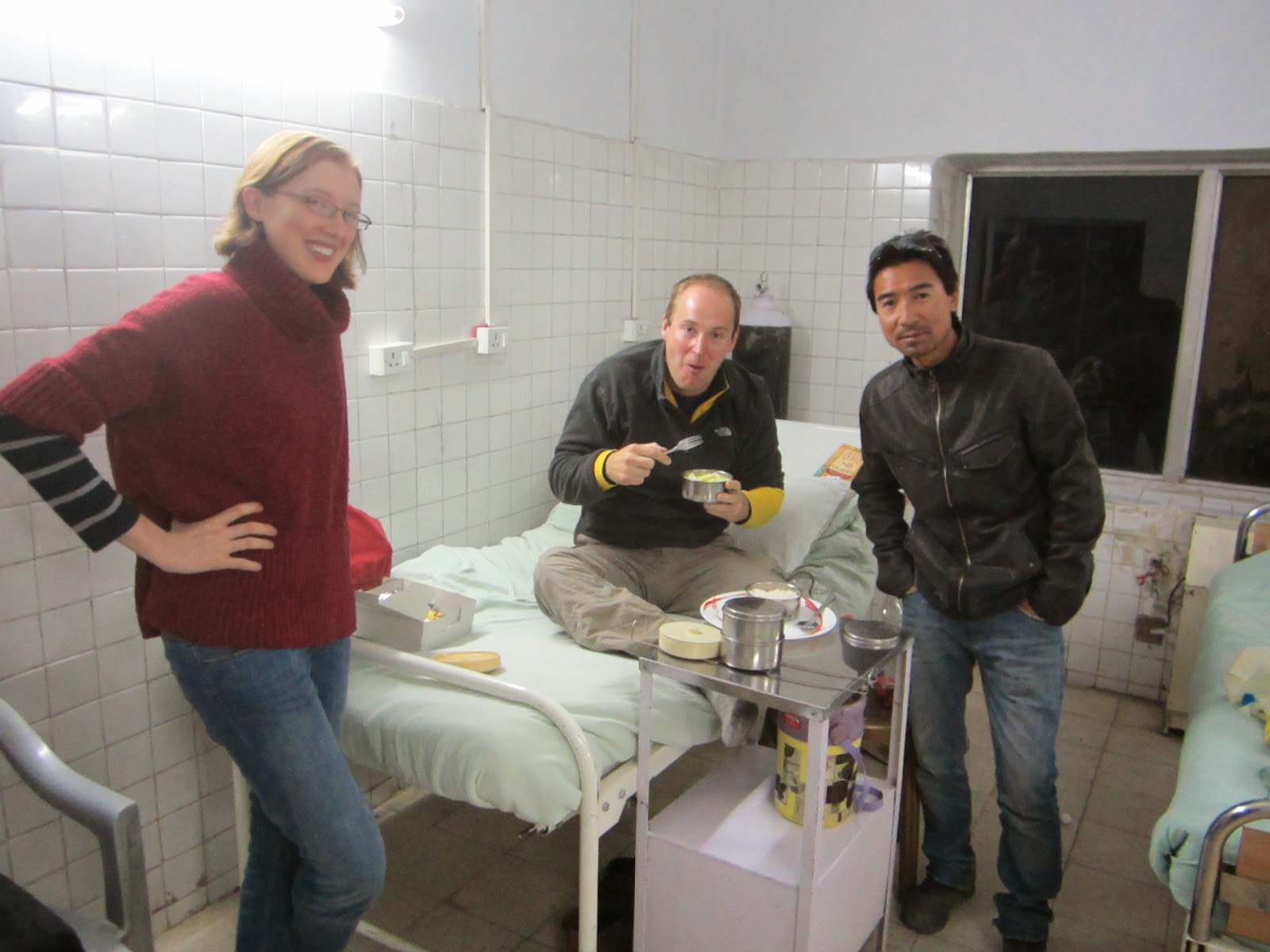Despite the incredible landscapes, culture, sunshine and people of Ladakh, it is the effects of high altitude on the human body that will live longest in my memory. Thankfully Phil, Charlie and I all returned from Ladakh in full health, but it was a bumpy ride along the way.
In the UK, we don't have to deal with high altitude and the effects of a lack of oxygen. We might find life on the top of Ben Nevis a little chilly, but 1344m above sea level is a mere nobble relative to the soaring peaks of the Himalayas. Phil and I currently live at sea level (Mumbai) having moved from just above sea level (Cambridge) so expected that we would need some time to acclimatise in Leh before attempting any serious exercise.
A prophetic sign of which we should have taken a little more notice
Saying that, Phil ran a half marathon within 24 hours of arriving in Leh but thankfully he was fine, and proud to be the first foreigner to finish. I'm not sure if I have a much more extreme example of ignoring medical advice!
The typical signs of altitude sickness are bad headaches, nausea, loss of appetite, difficulty sleeping and shortness of breath which we all suffered to some extent when arriving in Leh (3500m) although the effects wore off within a couple of days. Even when acclimitised though, the air feels thin and walking up what would usually be an easy slope feels like a significant effort.
Charlie had been a little unwell with the old Delhi Belly before arriving in Leh but seemed to be picking up when we set out on our trip to Pangong Lake. Unfortunately, we soon found out that 4400m was too high for Charlie as he became progressive unwell throughout the night. His symptoms though were not those listed above. Instead, he started garbling nonsense and slowly became unable to coordinate his arm and leg movements and was fairly immobile by the time the sun came up.
This was very scary and we all dashed off to the nearest army base at first light, which had rudimentary medical facilities. It was clear to Stan, our guide, that he needed oxygen and the quicker the better. The rather relaxed army team (who had clearly seen this many times before) hooked Charlie up to an oxygen canister and measured his oxygen blood content.
The healthy range for blood oxygen is between 90 and 100, although you might expect it to be a little lower at Pangong, as we'd just arrived. Phil's was 91, Stan (our guide) was 90, I was 85 and Charlie was......54! This was serious, but easily rectified by getting as much oxygen into Charlie as possible. He stayed on the machine for a while and had an injection of an altitude sickness drug which gave him enough stability for a fast ride back to Leh.
Charlie was not particularly alert at this point. We'd spent a lot of the night trying to keep him warm as the freezing temperatures didn't help the situation. The army chap was friendly, and we had a good chat about life in Mumbai.
In Leh, we took Charlie straight to the hospital where Stan did a sterling job of pushing to the front of a queue of 20 Indians waiting to see the doctor, and getting him settled in the tourist ward, hooked up to an oxygen canister. The tourist ward was fairly quiet and seemed to exist solely for oxygen-related issues judging by the number of canisters lying around. Charlie's canister was opened using a spanner hit with a rock by a nurse, and he settled down for the next day and a half to get his oxygen levels back to normal.
Hooked up to the canister. This ran out in the afternoon and it was a little while before Charlie could persuade the nurses to replace it.
A much cheerier Charlie by the evening. We took a packed dinner and Charlie managed to drink a litre of juice to get 9 of his 5-a-day according to the carton.
On the mend.
Charlie was much happier once he got an oxygen tube rather than a mask, which was apparently a bit sweaty.
Charlie was also prescribed a cocktail of drugs, including one which looked curiously like viagra! We checked later online to confirm our suspicions...I guess it was used to get the blood flowing.
Charlie's magic pills
It was very clear at this point that Charlie couldn't go on the trek as suffering similar effects at 5000m in the middle of nowhere would have been very dangerous. We were reticent about going on the trek without him, but Stan had already put all the arrangements in place, including 6 horses and a horseman who had walked for two days to meet us at the starting point. Further, Stan had arranged for the hotel manager to take personal care of Charlie and looked after him for four days of recuperation in a relaxing environment. Charlie needed some rest to recover and encouraged us to go on the walk, which all worked out fine in the end as the hotel was excellent and Charlie was in top form by the end of our trek.
Thankfully, Charlie made a full recovery to our great relief, and I've learned that carrying an oxygen canister on any future trips would be a good move. We first knew that Charlie was on the mend in the hospital when he started to complain about the length of the bed and the quality of the service provided by the nurses! An Indian Government hospital isn't quite at the level of the NHS...







No comments:
Post a Comment